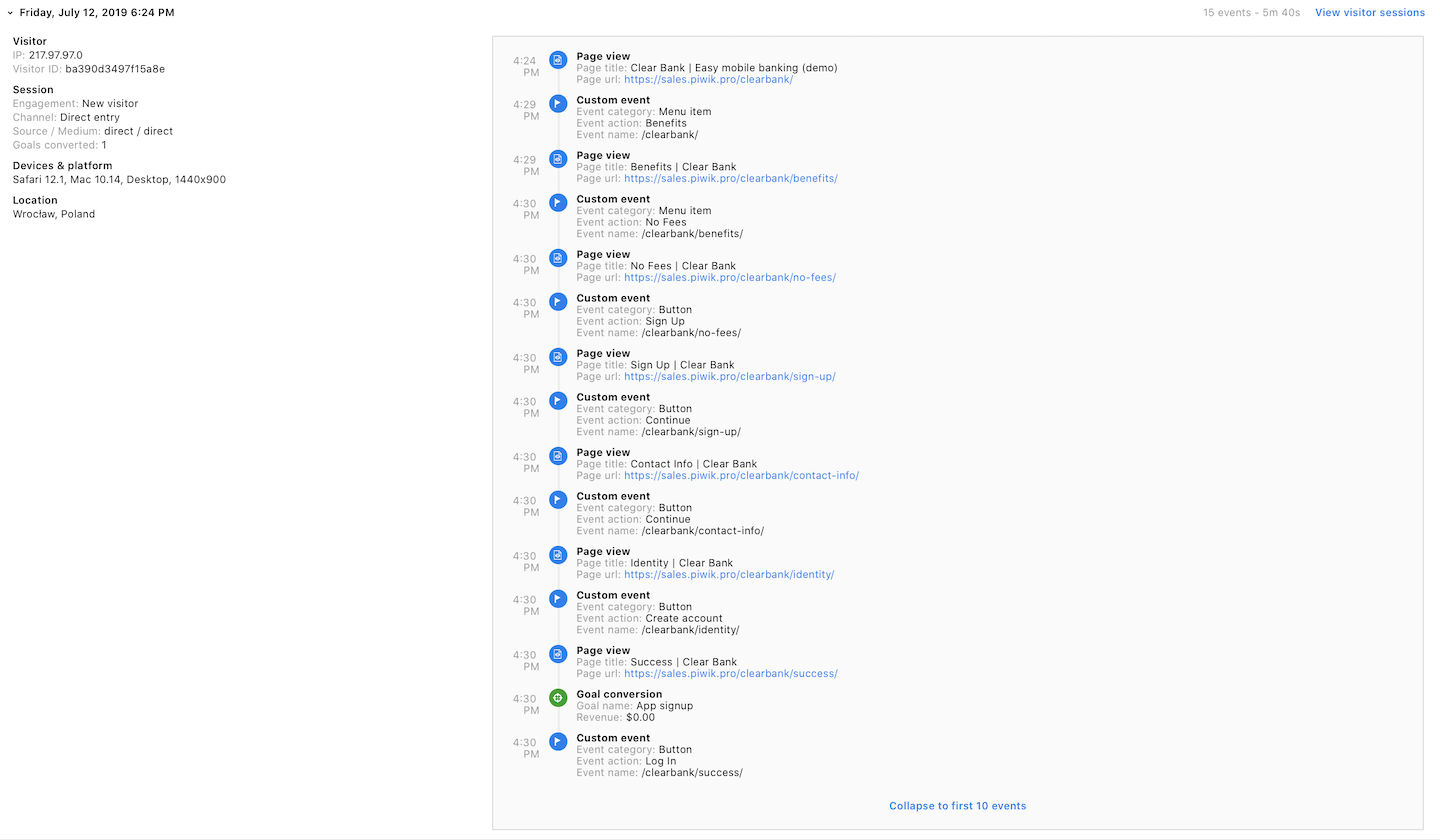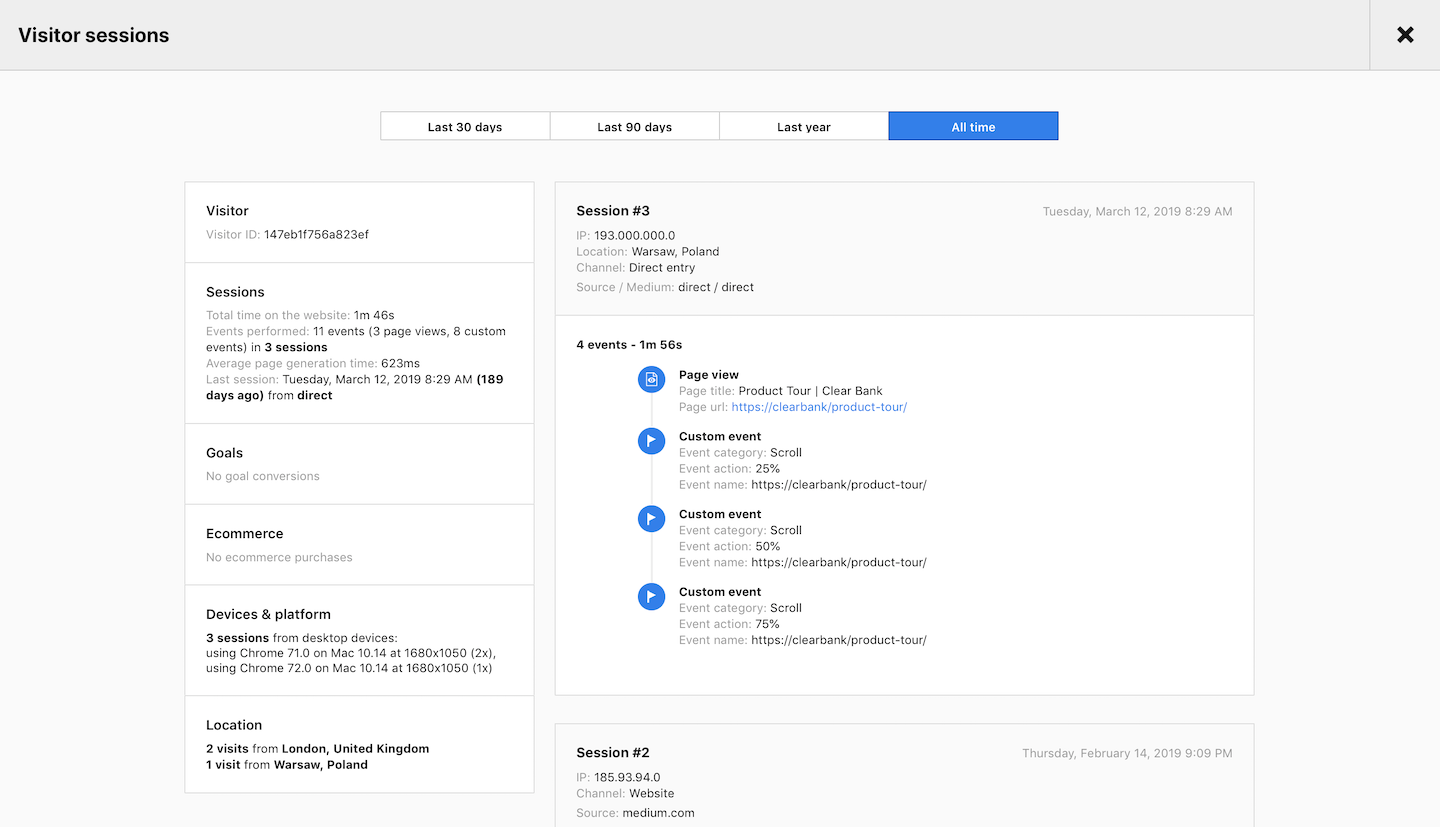As we arrive at the last chapter of this guide, we’d like to show you a report that displays every single tracked action a visitor took on your website. For example, viewed a pricing page, scrolled 50%, clicked a signup button and completed a goal defined as app signup. All this information can be viewed in the session log report. It’s no accident that we’ve put this report at the end of this guide, because now we can see everything that we’ve set up nicely coming together in logs. Let’s take a look.
View the session log report
To access the session log report, follow these steps:
1. Go to Menu > Analytics.
2. Navigate to Reports.
3. On the left, click Session log.
4. View the report.

Each log from the report will have a wealth of valuable information. The section on the left shows the date, IP address, type of entry – direct, website, or campaign, internet provider – custom dimensions, if you’ve set them up, new or returning visitor, country, browser, operating system, device type and goal conversions.

The section on the right tells you what actions a visitor took on your website. If you have set tracking for custom events and goals, then these actions will show up in this section.

We encourage you to browse through this report and become familiar with the data it stores. After some time you’ll feel comfortable reading this report like a map that shows a visitor’s behavior. Let’s review an example.
Session log example
The following log can tell us how our visitor moved around the Clear Bank website and what actions they took.

First, the visitor spent some time on the home page clear bank/, then clicked a menu item benefits, viewed the page clearbank/benefits, clicked a menu item No Fees, spent some time on the page clearbank/no-fee, clicked a signup button, went through the signup process clearbank/sign-up > clearbank/contact-info > clearbank/identity >clearbank/success, completed a goal App signup, and clicked a login button.
From this log we also learn that the visitor entered the website directly and was using a mobile device with Safari and iOS. By hovering over the icons (as we showed you above) we can gain more information about visitor’s device and location.
There’s one more thing we’d like to show you. In the report, you can see actions like clicking on a menu item, button, or completing a goal. But if we haven’t set tracking for these elements, our report will show only the pages the visitor looked at. Like in the example below.

So whenever you set a custom event with triggers like button click or newsletter signup it will enrich your visitor log report with this data. Moreover, whenever you start tracking these elements, the session log will always show you if the data are being collected correctly or not. Keep that in mind and use this report to do checkups.
Cherry on top
In the session log report you can also find visitor sessions combined together. This report stores information about all the session a visitor made to our website and all the actions they’ve performed. It’s a mine of information, and if you are keen on studying the behavior of people who come to your site, you’ll love this report.
To access the visitor sessions, follow these steps:
1. In the session log report, click View visitor sessions.

2. View the report.

And now we’ve reached the end of this guide. After going through so many topics we are confident you feel enriched with new knowledge and skills. Now it’s time for you to take the leap on your own – experiment, experiment and experiment even more. Remember, your business and your website are unique, and it’s your task to discover how best to track, collect and understand data for your particular organization. We wish all the best on your journey. Goodbye!
